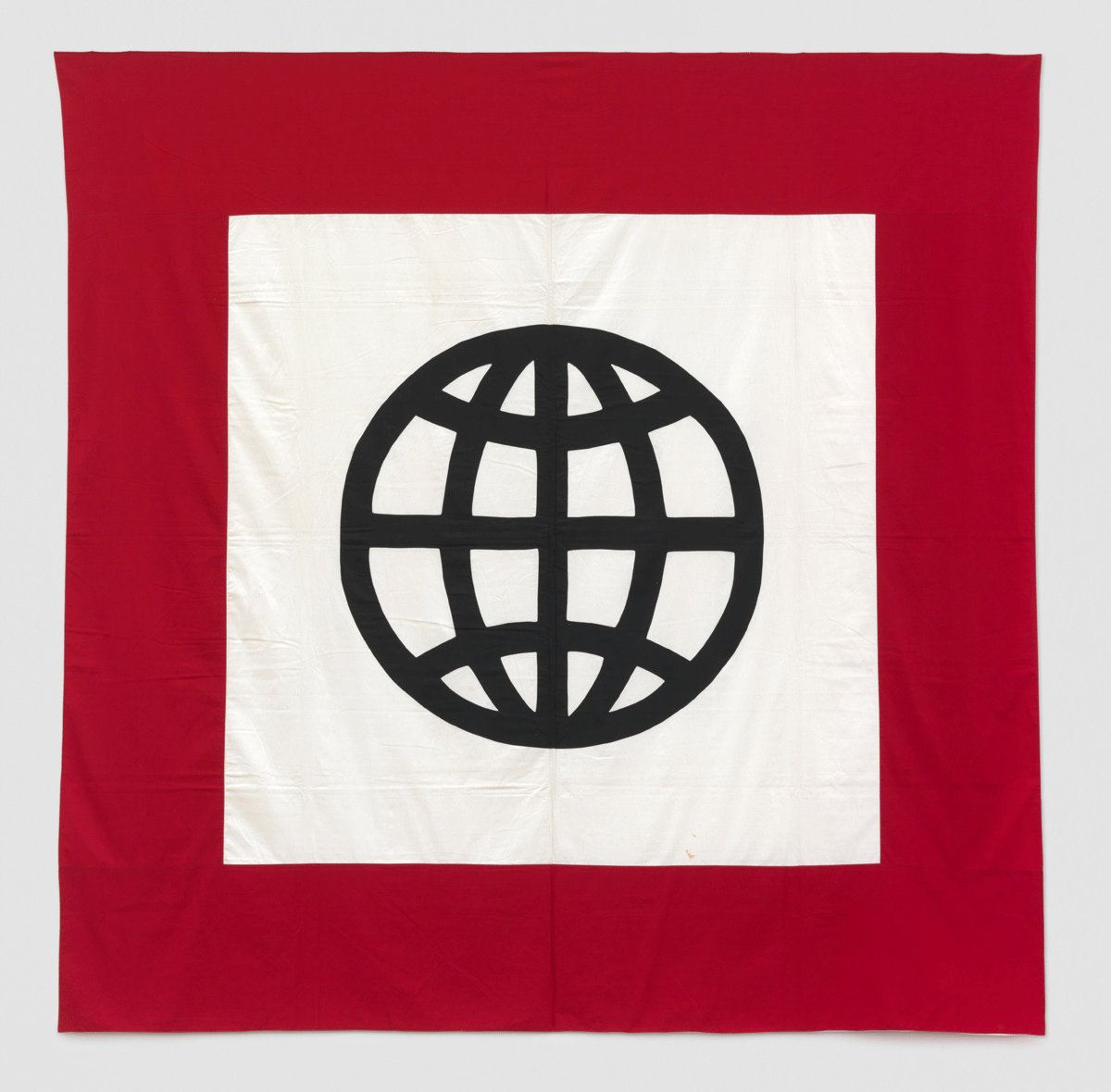Printed and sewn cotton
248.5 x 224.5 cm
Kunstmuseum Liechtenstein, Vaduz
Purchased with funds from "Stiftung Freunde des Kunstmuseum Liechtenstein"
Matt Mullican's Untitled (Indian Banner: World) is a roughly square cotton banner of striking presence with its large-format, reduced form of more than two by two metres. We see a black pictographic representation of the globe on a white ground, framed by a wide red border. This stylised pictogram of a globe features in many different forms in Mullican's work and embodies the world. It is part of a series of symbols developed and designed by the artist which belong to his system of a universally comprehensible and, in a sense, hermetically diverse cosmology.
The basis of his artistic systematisation is the question as to the relationship between a world of objects (matter) and our subjective perceptions which determine this world in terms of its appearance. In his pictorial models of organisation Matt Mullican distinguishes five substantial levels, assigning one colour and different symbols to each. The "world of physical elements" (green) is the realm of the material devoid of any meaning. The "world unframed" (blue) symbolises our everyday world. The "world framed" (yellow) embodies the ideas, abstract conceptions found in art or science. The framed globe is assigned to this realm. Black and white are assigned to the "world of language and signs", mediation. The colour red, finally, symbolises the "subjective world": the domain which holds our perceptions, organising and interrelating them. This is the abode of the subject's thoughts and feelings.
By dint of its red border, the flag-like Untitled (Indian Banner: World) can thus be decoded as a reference to the level of the subjective that conveys our abstract ideas (stylised framed globe) in the "world of language and signs" (black and white). Accordingly, the piece stands for the ingenious, inventive and creative ideas that, as human beings, we produce and bring into the world through language and signs.
Denise Rigaud
The artwork adorns Liechtenstein's SEPAC stamp this year. The association of thirteen small postal operators in Europe issues stamps on common themes every year. This year the stamps are works of art from state collections. Further information at philatelie.li
